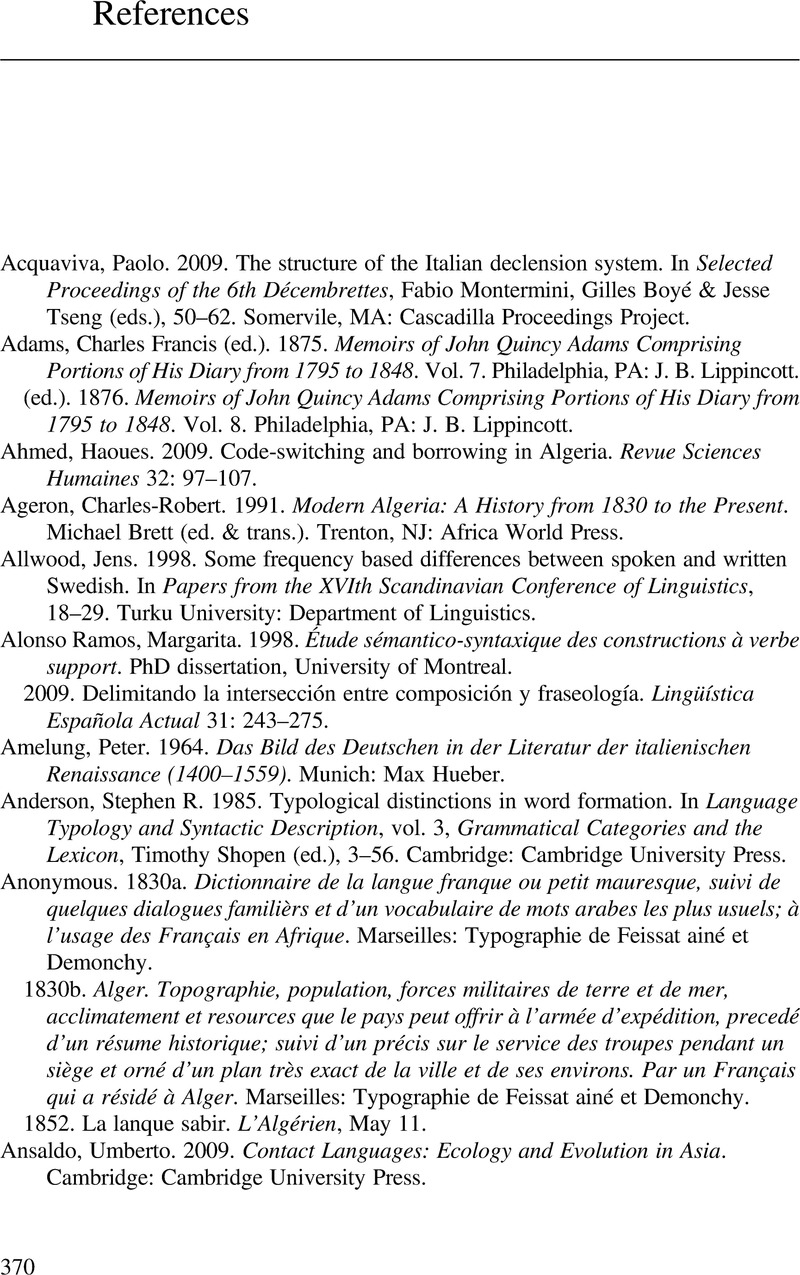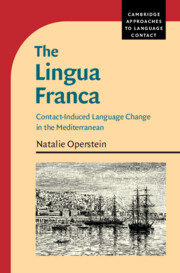Book contents
- The Lingua Franca
- Cambridge Approaches to Language Contact
- The Lingua Franca
- Copyright page
- Contents
- Tables
- Series Editor’s Foreword
- Abbreviations
- 1 Introduction
- 2 The Author
- 3 The Dictionnaire
- 4 The Orthography
- 5 The Lexicon
- 6 The Word Formation
- 7 The Inflection
- 8 The Syntax
- 9 The Lingua Franca
- Book part
- References
- Index
- References
References
Published online by Cambridge University Press: 25 November 2021
- The Lingua Franca
- Cambridge Approaches to Language Contact
- The Lingua Franca
- Copyright page
- Contents
- Tables
- Series Editor’s Foreword
- Abbreviations
- 1 Introduction
- 2 The Author
- 3 The Dictionnaire
- 4 The Orthography
- 5 The Lexicon
- 6 The Word Formation
- 7 The Inflection
- 8 The Syntax
- 9 The Lingua Franca
- Book part
- References
- Index
- References
Summary

- Type
- Chapter
- Information
- The Lingua FrancaContact-Induced Language Change in the Mediterranean, pp. 370 - 400Publisher: Cambridge University PressPrint publication year: 2021

